The growing trend of brands turning to influencer marketing is facing the bitter reality, with high expenses and little return on investment becoming a regular occurrence. If you're considering using influencer marketing in your next campaign strategy, there are some things you should consider beforehand.
When Influencer Marketing Works
No one can argue against how quickly influencer marketing has risen in digital advertisement. This collaboration between businesses and influential social media figures has the potential to promote brand awareness, drive sales and create a sense of community. However, it can also be quite costly, especially if you invest in the wrong creators.
In some instances, investing in a collaboration can be beneficial to both parties like in case of affiliate marketing, where an influencer's income is performance based so the risk is shared with the brand and influencers. This kind of strategy could have the potential to maximize your return on investment and help develop influencer relationships in a cost-efficient way.
Despite the advantages, the majority of brands agree that influencer marketing can turn out to be quite a hassle and an expensive alternative. So, before launching an expensive influencer marketing campaign, consider whether your product truly aligns with the influencer's audience.
How to Use Targeted Ads Instead of Influencers
Let's consider more cost effective ways to boost your campaign. For example, using tools like Meta Ads, TikTok Ads, and Youtube Ads, these are great for precisely targeting your ideal audience by demographics, interests and behaviors. Using these tools will also give you the opportunity to target influencer's followers in your niche directly, effectively cutting out the middleman (the influencer) and turning what could have cost you $5,000 in a single post into $2,000 in targeted ads to the same following.

The Pros and Cons of Each Method
Influencer Marketing
Pros:
- Large reach and potential to go viral.
- Influencer authenticity could strengthen brand trust.
- Works well for larger awareness campaigns with a big budgets.
Cons:
- High upfront costs with no guaranteed ROI.
Targeted Advertising
Pros:
- Generally cheaper allowing for flexible spending.
- Provides higher engagement and conversion rates.
- Measurable results that can be analyzed and optimized.
- Easier to target specific audiences and even target influencer’s followers.
Cons:
- Requires ongoing testing and adjustments to continue seeing results.
Both techniques have their advantages and disadvantages, and in order to make a well-informed decision, you’ll need to weigh them up according to your goals.

Influencers can boost your reach and provide social proof but they come with risks that targeted ads don’t. Targeted ads can be a more stress free way to achieve your objectives, if you find that influencer marketing isn't the right fit for your brand. So, before diving in the deep end and investing thousands into influencer marketing ensure that you're researching your influencer's credibility, engagement rates and that they align with your brand values. Don't be afraid to ask for a history of their measurable results, especially if you're working on a budget!
Are you ready to move forward with your marketing strategy? Reach out to our team and we can help you identify effective ways to achieve your campaign goals. Schedule a free consultation today!






















.png)



.svg)




